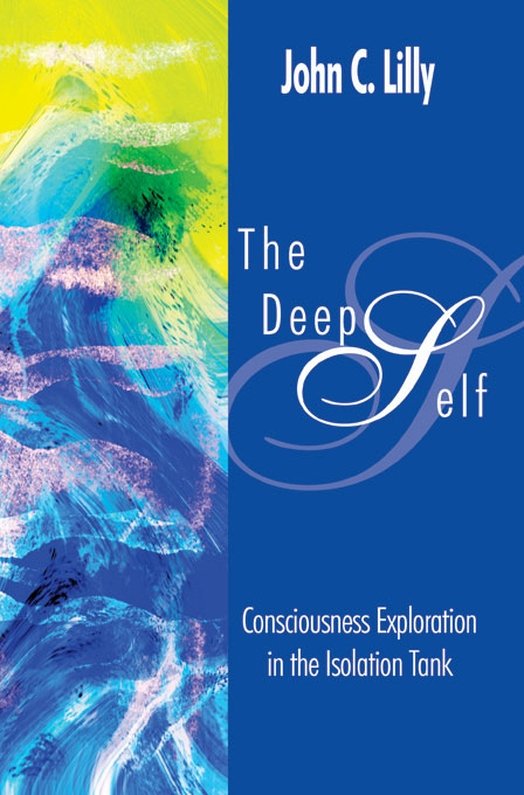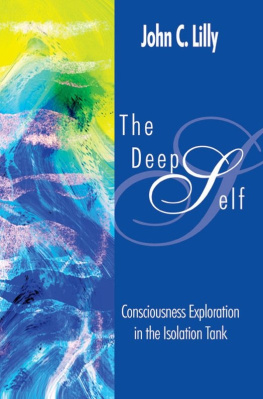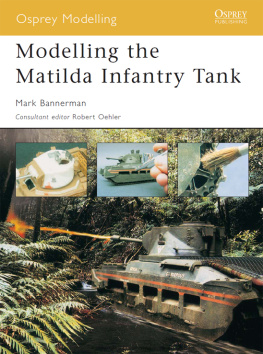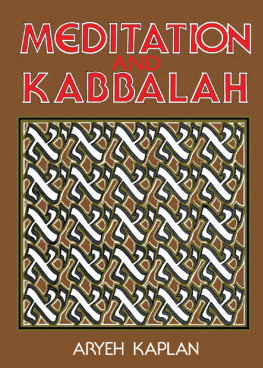Lilly - The Deep Self
Here you can read online Lilly - The Deep Self full text of the book (entire story) in english for free. Download pdf and epub, get meaning, cover and reviews about this ebook. City: Chicago, year: 2012;2006, publisher: Gateways Books & Tapes, genre: Religion. Description of the work, (preface) as well as reviews are available. Best literature library LitArk.com created for fans of good reading and offers a wide selection of genres:
Romance novel
Science fiction
Adventure
Detective
Science
History
Home and family
Prose
Art
Politics
Computer
Non-fiction
Religion
Business
Children
Humor
Choose a favorite category and find really read worthwhile books. Enjoy immersion in the world of imagination, feel the emotions of the characters or learn something new for yourself, make an fascinating discovery.
- Book:The Deep Self
- Author:
- Publisher:Gateways Books & Tapes
- Genre:
- Year:2012;2006
- City:Chicago
- Rating:3 / 5
- Favourites:Add to favourites
- Your mark:
- 60
- 1
- 2
- 3
- 4
- 5
The Deep Self: summary, description and annotation
We offer to read an annotation, description, summary or preface (depends on what the author of the book "The Deep Self" wrote himself). If you haven't found the necessary information about the book — write in the comments, we will try to find it.
Lilly: author's other books
Who wrote The Deep Self? Find out the surname, the name of the author of the book and a list of all author's works by series.
The Deep Self — read online for free the complete book (whole text) full work
Below is the text of the book, divided by pages. System saving the place of the last page read, allows you to conveniently read the book "The Deep Self" online for free, without having to search again every time where you left off. Put a bookmark, and you can go to the page where you finished reading at any time.
Font size:
Interval:
Bookmark:

This edition of The Deep Self , is respectfully dedicated to Dr. Albert Hofmann on the occasion of his 100th Birthday in 2006, and in honor of the long friendship he shared with Dr. Lilly, both pioneers in modern human consciousness research. It is also dedicated to Lee and Glenn Perry at Samadhi Tank, Grass Valley, California, www.samad-hitank.com , for designing and producing state of the art Isolation Tanks based on Dr. Lillys research, and their long enduring presence in his life, including their efforts to republish this edition. Faustin Bray at, www.soundphotosynthesis.com , for her steadfast support of Dr. Lilly through her extensive video and audio archives, chronicling Dr. Lillys work, and her unwavering dedicated friendship to him in time of need. Brian Wallace for his music, poetry, art, and many contributions to Dr. Lilly in California and Maui, Hawaii. Ann and Jerry Moss for providing a safe haven for John to land in Hawaii during his retirement and all their many kind blessings. Craig and Aliya Inglis for their contributions to Isolation Research and Tanking technology. Dr. Larry and Char Raithaus, Roberta Goodman, Paradise Newland, Dr. Michael Hyson for providing a family and support to Dr. Lilly in Hawaii. Barbara Clarke Lilly, daughter and long-time travel and research companion.
Lisa Lyon Lilly, Johns confidant, daughter, and muse. Heartfelt thanks also to Cynthia Lilly Cantwell, as well as John and Colette Lilly. John Allen, Institute of Eco-Technics, London, Biosphere II Founder and trusted colleague. Napier Marten and Ian Middleton for continuing Dr. Lillys efforts in Cetacean conservation, www.cetaceaproject.org . Rudi Vogt for covering the cosmic waterfront in Switzerland. Thomas Welch, Esq. for his wise counsel. Dr.Beverly Potter at Ronin Books, Berkeley, California, www.ronin-pub.com , for her continued championing and publication of Dr. Lillys literary works in the United States, including The Scientist , Programming The Human Bio-Computer, The Quiet Center, and The Steersman. Dr. Lillys World Wide Web site, www.johnclilly.com was designed by James Suhre, also known as BigTwin, who along with Patricia Sims, serves as a director for the John C. Lilly Research Institute, Inc. Both Jim and Patricia cared greatly for John, his love of the sea, dolphins, whales, and continue his work through their efforts. Finally, to the joyous memory of Johns family and friends that have gone on before us: Charles Richard Lilly, Dr. Timothy Francis Leary, Dr. Oscar Janiger, Allen Ginsberg, and Caroline Bentley Ely.
Philip Hansen Bailey
Executive Director, John C. Lilly Research Institute
Parts of my book Programming and Metaprogramming in the Human Biocomputer are pertinent to the simulation/model/system of thought presented in this appendix. One can see the origins of this model starting in this earlier work. The idea of the contained mind within a brain is assumed in the following excerpts. Those who have a preference for the uncontained mind belief system have little patience with this cybernetic approach. (For an analysis of the uncontained mind system of belief, see Chapter Eight of The Deep Self. )
I find this contained mind belief system necessary for a disciplined approach to the analysis of the phenomena experienced in the isolation tank. As I state in Chapter Eight on the uncontained mind, I am not espousing either contained or uncontained mind as true/real. We do not yet have the critical data/experiments /investigators to do a properly scientific investigation. Here we are laying the groundwork, the context for such scientific work.
The following excerpts from Programming and Metaprogramming in the Human Biocomputer show the early work and give details of the reasons for the development of the contained mind theory/belief system.
As one proceeds from outer or external projection analysis to internal projection analysis, one moves from the excitation of projection systems by external energies to a lack of such excitation in these systems. For example, in the profound blackness and darkness of the floatation room there is no visual stimulus coming to the eyes or the visual systems. Similarly in the profound silence there are no sounds coming into the acoustic apparatus, and similarly the other systems are at a very low level of stimulation from the external world.
One might expect then that these systems would appear to be absolutely quiet, dark and empty. This is not so. This is the area in which most subjects begin to get into trouble. It is also the area in which psychiatric and clinical judgments may interfere with the natural development of the phenomena. In the absence of external excitations coming through the natural end organs the perception systems maintain this activity. The excitation for this activity comes from other parts of the computer, i.e., from program storage and from internal body sources of excitation. The selfprogrammer interprets the resultant filling of these perceptual spaces at first as if this excitation were coming from outside. In other words, the sources of the excitation are interpreted by the self as if coming from the real world. For certain kinds of persons and personalities this is a very disturbing experience in one sphere or another; for them it is explicable only with telepathy.
We have been taught from babyhood that this kind of phenomena in a totally conscious individual is somehow forbidden, antisocial and possibly even psychotic.
One must analyze this metaprogram that has been implanted in one from childhood, examine its rationality or lack of same and proceed in spite of this kind of an interpretation of the phenomena that occur. Once one has analyzed this as an evasion or a defensive maneuver against seeing the true state of affairs one can allow oneself to go on andexperience the deeper set of phenomena without interfering with the natural metaprograms. After achieving this level of freedom from anxiety, one can then go on to the next stages. (The programming orders for these inner happenings to take place are worked out in advance of the session, at first written down or spoken into a recorder. Later such orders can be programmed without external aids.)
The following phenomenological description has been experienced by one subject under these special conditions. One experiences an immediate internal reality which is postulated by the self. It is apparent to me that ones own assumptions about this experience generate the whole experience. The experienced affects, the apparent appearance of other persons, the appearance of other beings not human, ones own past phantasies, ones own selfanalysis, each can be programmed to happen in interaction with those parts of ones self beyond ones conscious awareness.
The content experienced under these conditions lacks strong reality clues. Externally real displays are not furnished; the excitation from the reality outside does not pattern the displays. Therefore the projections which do occur are from those systems at the next inward level from the operations of the perception apparatus devoted to external reality.
The phenomena that ensue are described by one subject as follows: the visualization is immersed in darkness in three dimensions at times but only when one evades the emerging multidimensional cognitive and conative space. One is aware of the silence in the hearing sphere; this too gives way to the new space which is developing. The body image fluctuates, appearing and disappearing, as fear or other need builds up. As with the darkness and the silence so with the presence or absence of the body image. Progress in using these projection spaces is measured by ones ability to neither project external reality data from storage into these spaces nor to project into these spaces the absence of external reality stimuli.
Font size:
Interval:
Bookmark:
Similar books «The Deep Self»
Look at similar books to The Deep Self. We have selected literature similar in name and meaning in the hope of providing readers with more options to find new, interesting, not yet read works.
Discussion, reviews of the book The Deep Self and just readers' own opinions. Leave your comments, write what you think about the work, its meaning or the main characters. Specify what exactly you liked and what you didn't like, and why you think so.











